_ruby
The Results
In Table Form
[ ]
]
In Chart Form
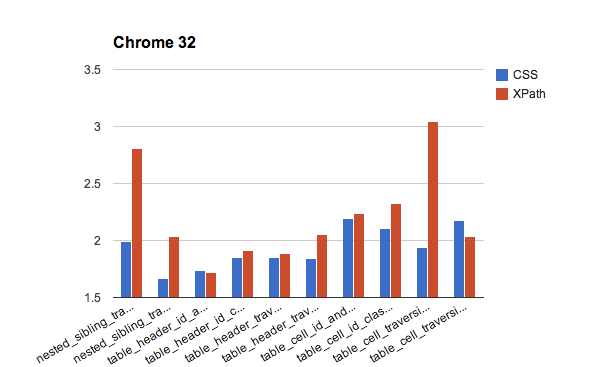
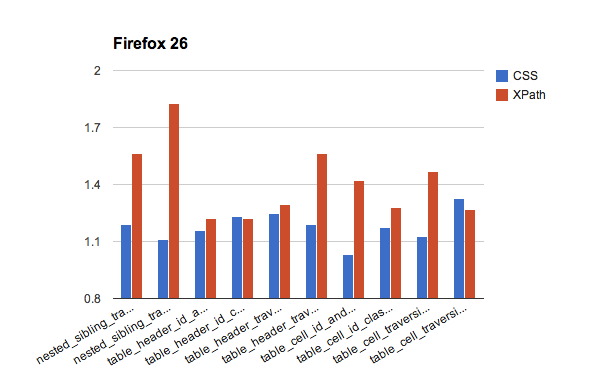
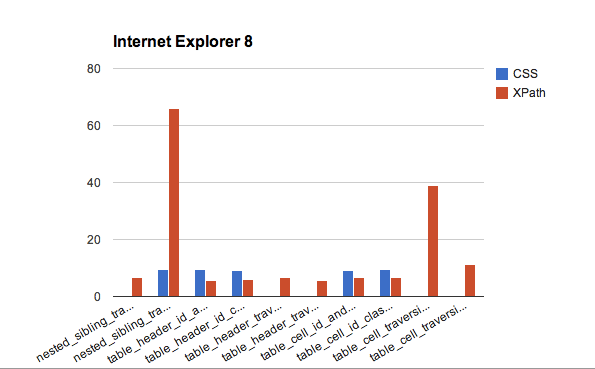
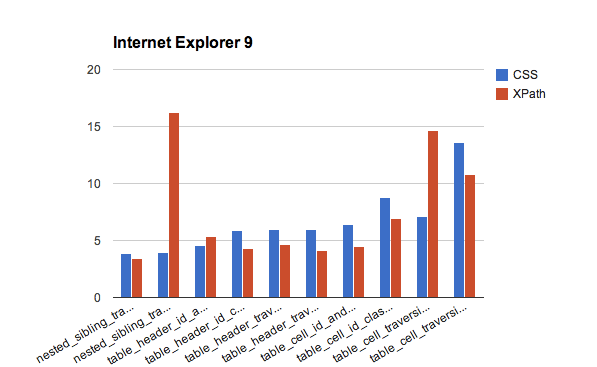
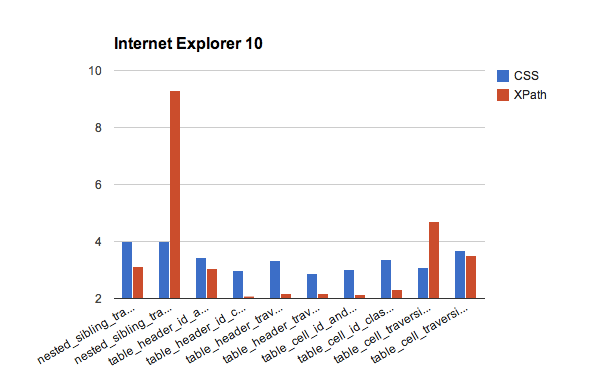
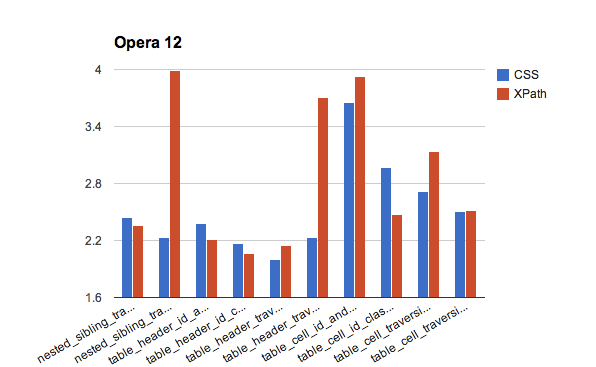
What The Results Tell Us
Chrome and Firefox are clearly tuned for faster CSS performance. Internet Explorer 8 is a grab bag of CSS that won't work, an out of control XPath traversal that takes ~65 seconds, and a 38 second table traversal with no CSS result to compare it against.
In IE 9 and 10, XPath is faster overall. In Safari, it's a toss up, except for a couple of slower traversal runs with XPath. And across almost all browsers, the nested sibling traversal and table cell traversal done with XPath are an expensive operation.
That shouldn't be too surprising though since they are brittle and inefficient ways to write locators. Do try to avoid them.
Summary
So all in all there are two circumstances where XPath is markedly slower than CSS. But they are easily avoidable. Otherwise, the performance difference is slightly in favor of CSS for non-IE browsers and slightly in favor of XPath for IE browsers. Given that, I would recommend that you choose your locator strategy based on what works for you and your team. And really, it doesn't matter. If you can ensure that the primary elements on your page have unique IDs and Classes then that will always be faster than traversing across the DOM (regardless of which locator strategy you use).
If you want to do some benchmarking on your own, I wrapped up all the code I wrote into this library.
Happy Testing!
About The Author
A huge thanks to David Burns, Brian Goad, Dima Kovalenko, and Simon Stewart who provided great feedback and insight into the test and example design.